Seaweeds of the South African South Coast


Order Ceramiales
Family Rhodomelaceae
Lophosiphonia capensis (Kylin) R.E.Norris 1992: 68
Plants tiny, dark red, usually epiphytic or epizoic, comprising relatively long prostrate axes and short (up to 2 mm) erect branches; visible to the naked eye as fine red hairs . Prostrate filaments about 100 µm in diameter, with upward-curving apices, attached by haptera that arise from pericentral cells. Segments uncorticated, with four pericentral cells. Erect filaments up to about 70 µm in diameter, segments 0.5-1 times as long as broad. Erect axes arising endogenously from dorsal faces of prostrate axes at intervals of 2 or 3 segments; usually strongly incurved; unbranched or with a few laterals arising adaxially. Vegetative trichoblasts absent. Tetrasporangia in erect axes, one per segment, in rectilinear series, up to 70 µm in diameter, with two long and one short cover cells. Antheridial stands subapical on erect filaments, cylindrico-conical. Cystocarps usually on proximal segments of laterals, globose, up to 200 µm in diameter.
Collections, ecology and regional distribution
Recorded from St James (False Bay) to the Durban area (17-51). Common on the south coast on Pyura and various larger algae, especially corallines such as Amphiroa spp., from the lower eulittoral to shallow subtidal zones.
World distribution: South African endemic.
Type locality: False Bay, Cape Province, South Africa (Silva et al. 1996).
Note: This species was previously known as Falkenbergiella capensis Kylin. A somewhat different growth form (as Falkenbergiella capensis) was recorded at Hluleka (Transkei) by Bolton & Stegenga (1987, Fig. 3f). Plants had few erect branches and the determinate laterals (usually two per segment) were “appressed against the substrate”.
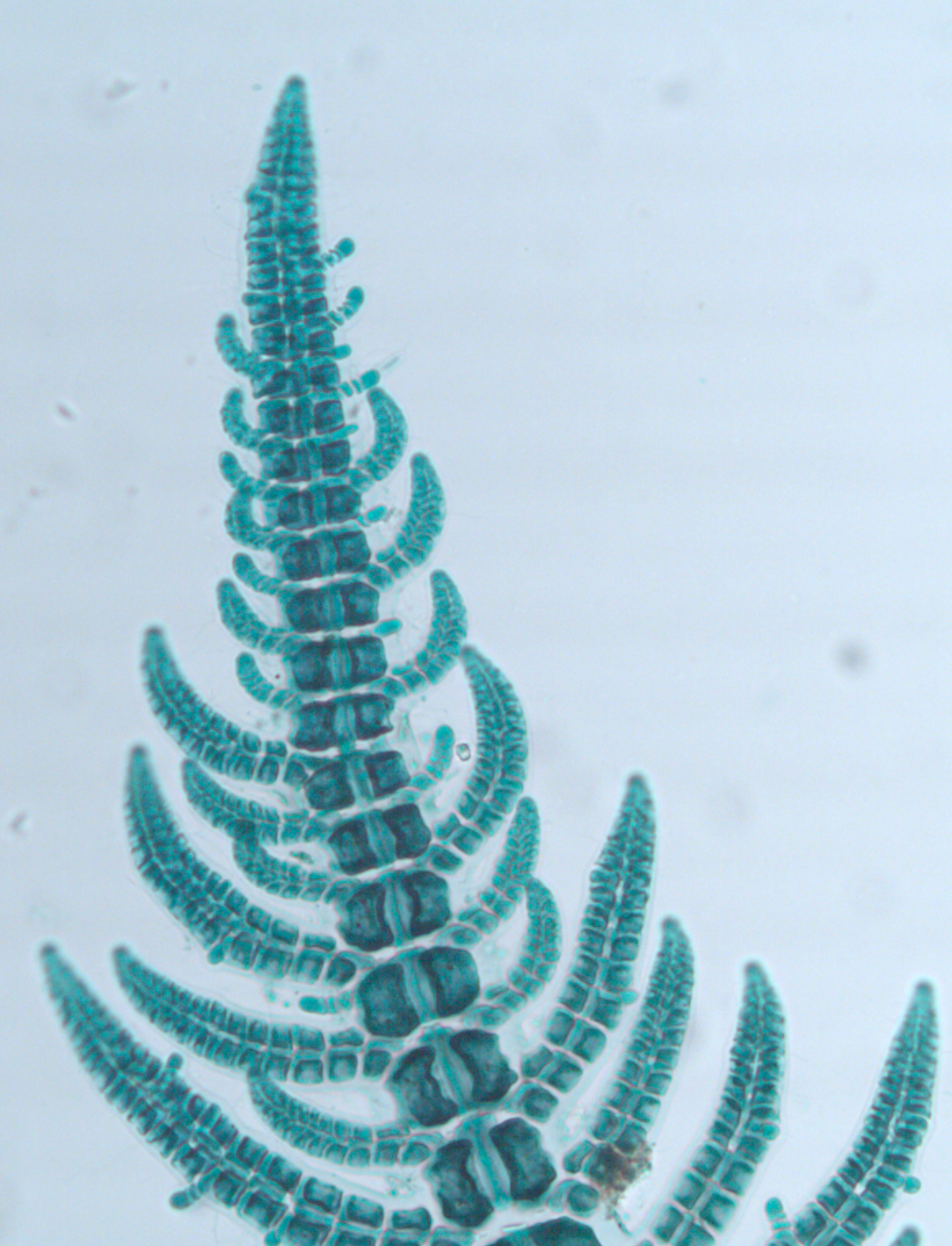
Lophosiphonia capensis tip (stained material, slide EC 440).
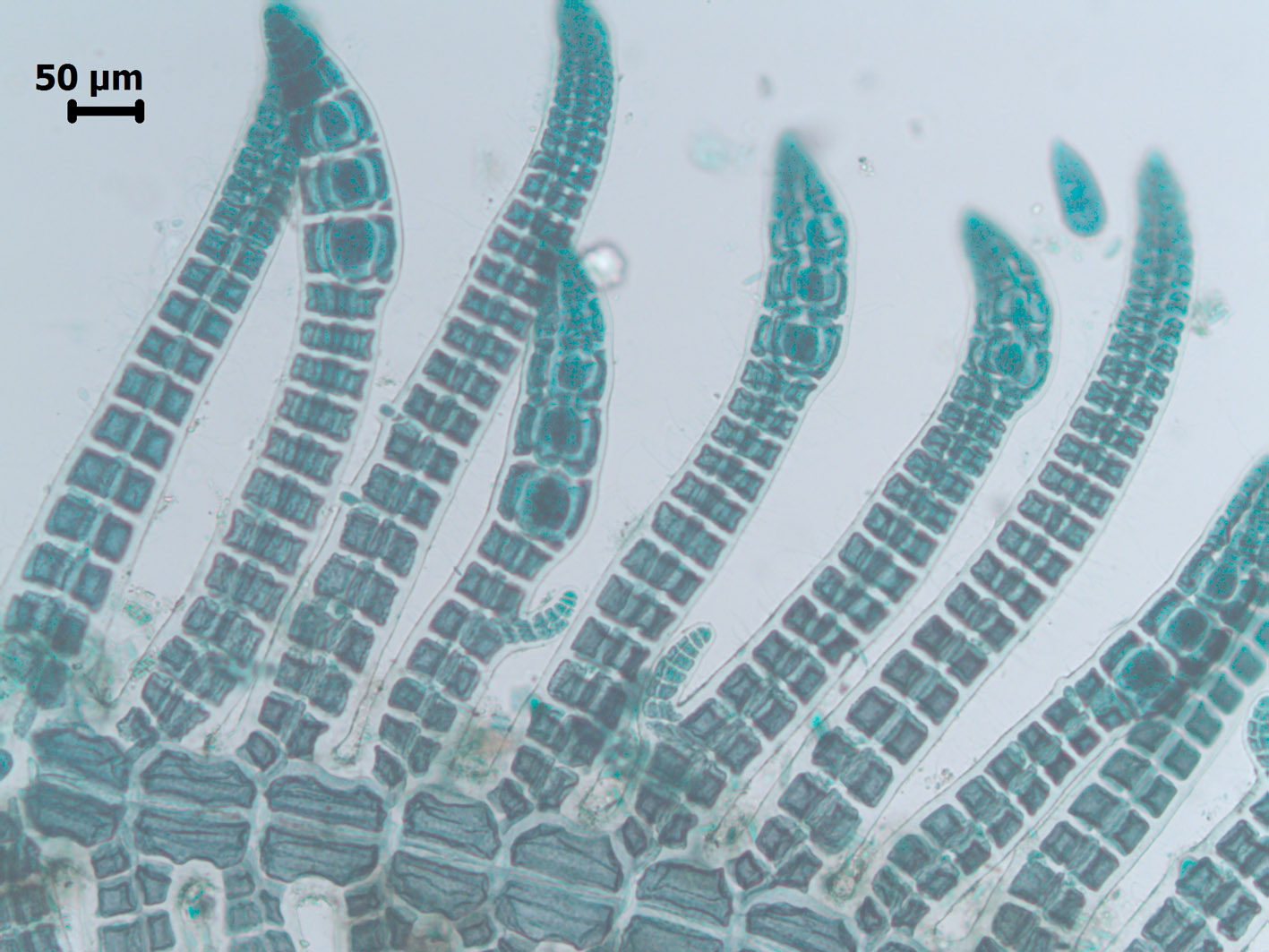
Lophosiphonia capensis, tetrasporophyte (stained slide).
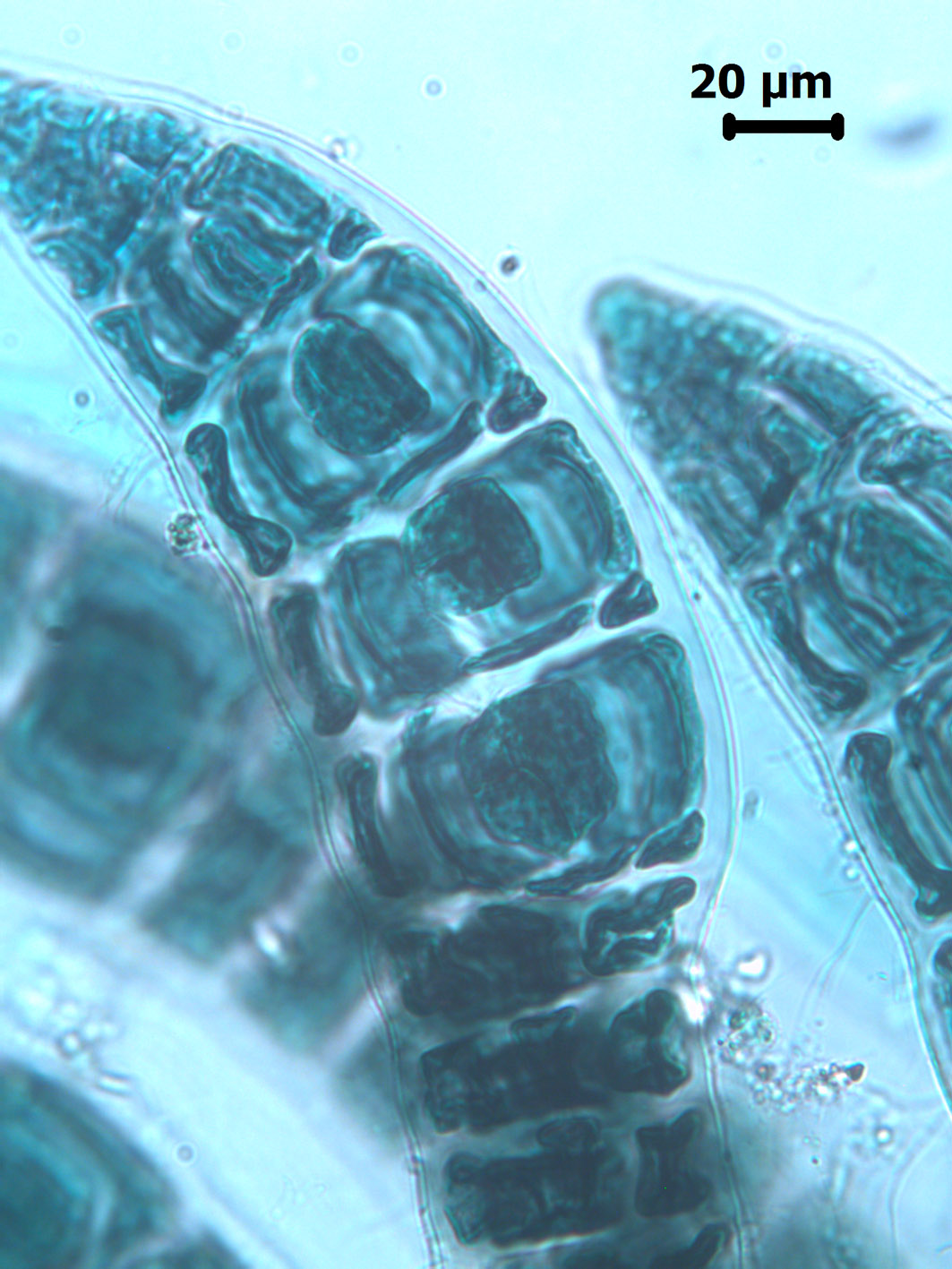
Lophosiphonia capensis, detail of tetrasporangium (stained slide).
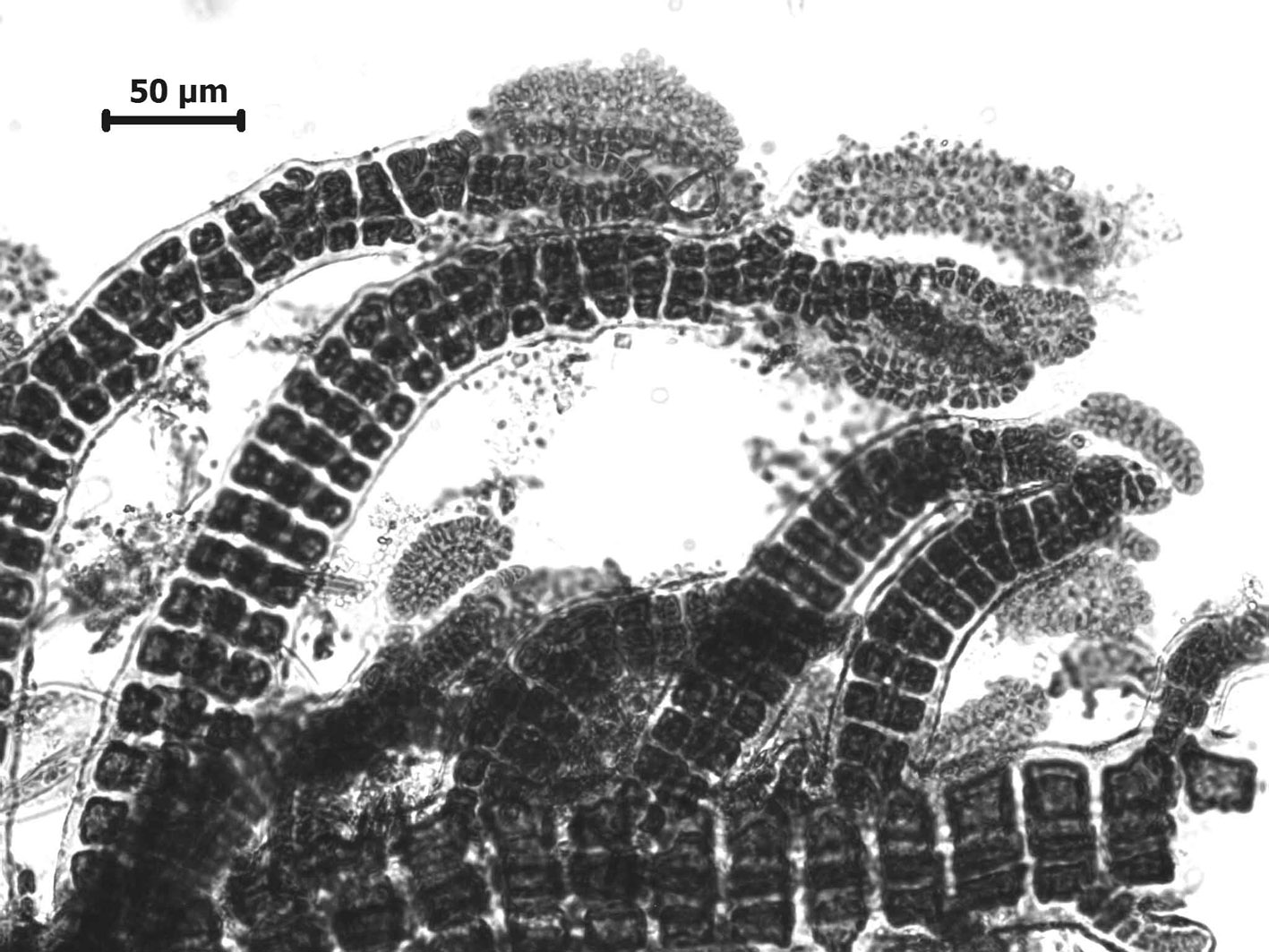
Lophosiphonia capensis, male thallus with sub-apical antheridia.
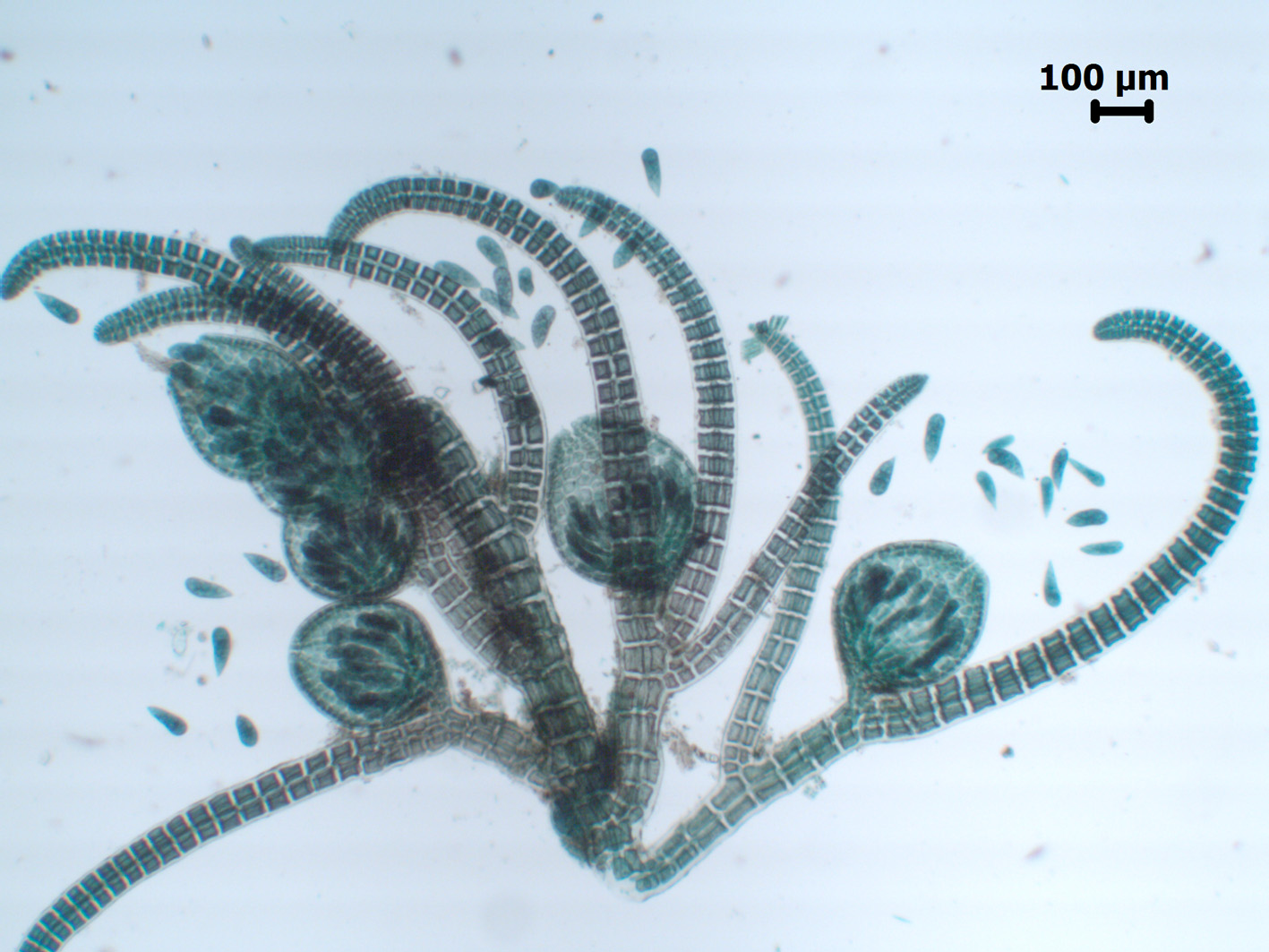
Lophosiphonia capensis, cystocarpic thallus (stained slide).
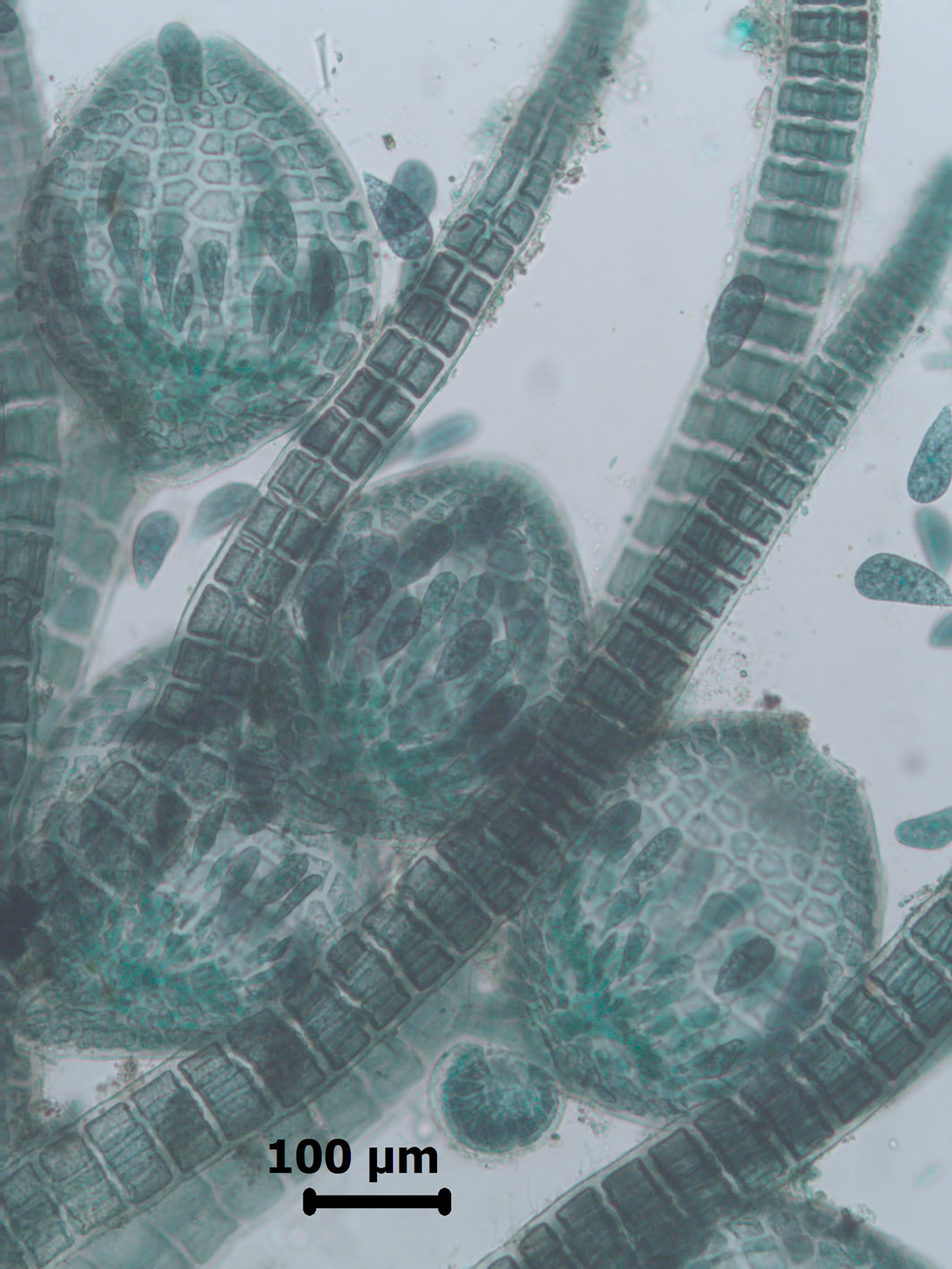
Lophosiphonia capensis, detail of cystocarps, with carpospores - some released (stained slide).
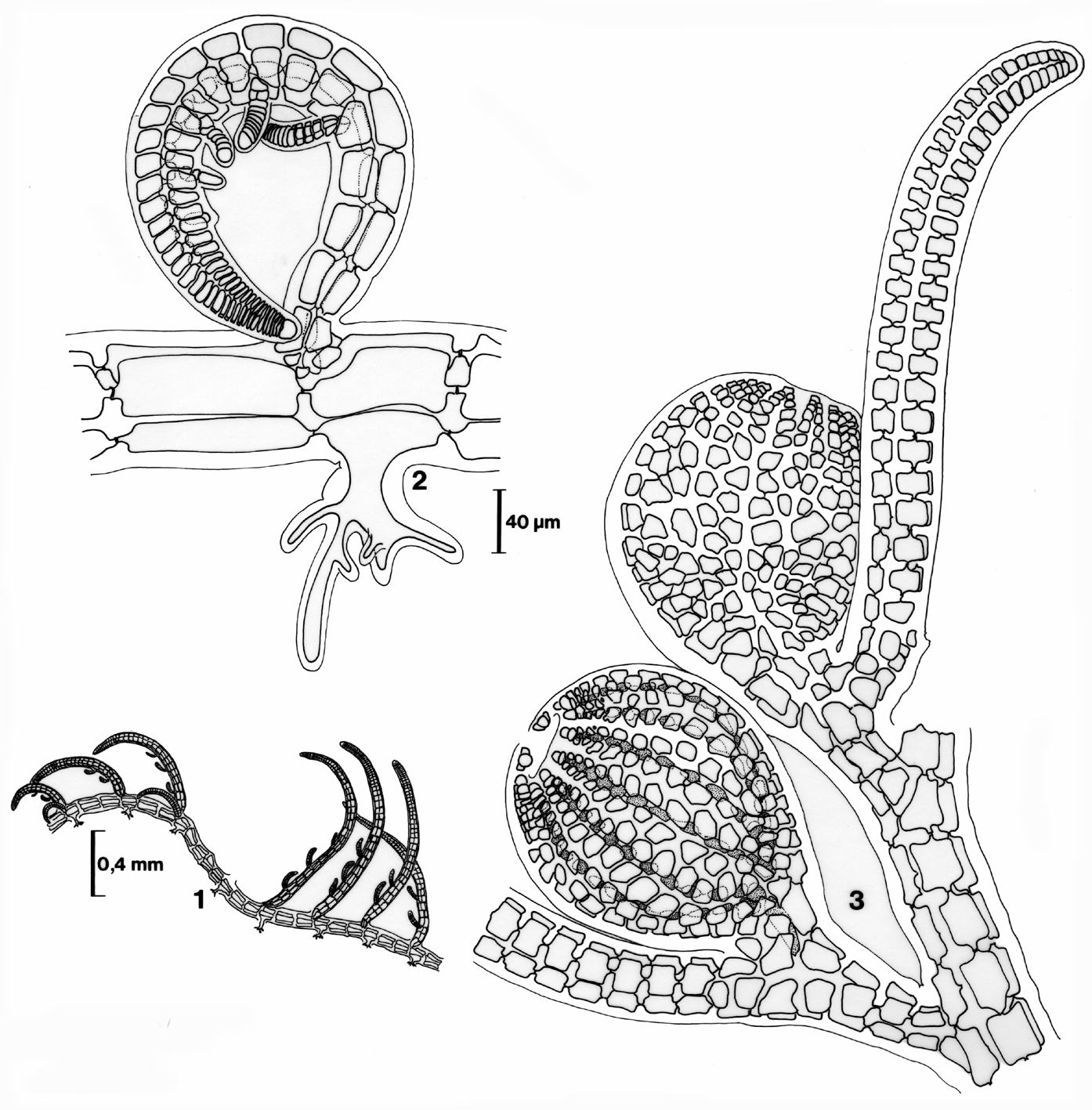
Lophosiphonia capensis. 1. Microscopic habit. 2. Detail of prostrate axis with young erect branch. 3. Cystocarps. Reproduced from Stegenga et al. 1997 (as Falkenbergiella capensis).
References Lophosiphonia capensis
Bolton. J. J. & H. Stegenga. 1987. The marine algae of Hluleka (Transkei) and the warm temperate/sub-tropical transition on the east coast of southern Africa. Helgoländer Meeresuntersuchungen 41: 165-183.
Norris, R.E. 1992. Ceramiales (Rhodophyceae) genera new to South Africa, including new species of Womersleyella and Herposiphonia. South African Journal of Botany 58: 65-76, 32 figs.
Silva, P.C., Basson, P.W. & Moe, R.L. 1996. Catalogue of the benthic marine algae of the Indian Ocean. University of California Publications in Botany 79: 1-1259.
Stegenga, H., Bolton, J.J. & R. J. Anderson. 1997. Seaweeds of the South African west coast. Contributions from the Bolus Herbarium 18: 655 pp.
Cite this record as:
Anderson RJ, Stegenga H, Bolton JJ. 2016. Seaweeds of the South African South Coast.
World Wide Web electronic publication, University of Cape Town, http://southafrseaweeds.uct.ac.za; Accessed on 07 December 2025.